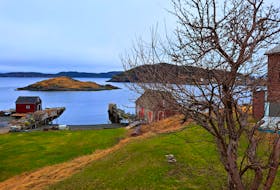When whaling was still going on, the one thing you didn’t want to be was a right whale.
They got their name because they were the right whale to hunt: they had thick blubber, so lots of whale oil, and, unlike some whales, the blubber meant the beasts would float after they were killed, making their harvest that much easier.
So, the right whale for hunters, and very much the wrong whale for surviving. (Imagine being named for your value, but only your value after death.)
They haven’t been hunted since 1949, when they were nearly extinct. There’s somewhere around 500 left in the Northern population, making them the most at-risk of all the whales.
And this year, they had a particularly hard time off the Atlantic provinces. Part of the right whale population moved into the Gulf of St. Lawrence last summer, with terrible results: 17 whales died and, of those that have been autopsied, most had died after collisions with ships. (A significant number also died after getting entangled in fishing gear.)
To deal with the rising right whale death total, Transport Canada ordered ships over 20 metres in length to slow to 10 knots as they travelled through part of the Gulf.
CBC News reported this week that, during the period between Aug. 11, 2017 and Jan. 11, 2018, when the ban was in place, 542 ships were reported to have broken that speed limit.
But of those 542, only 14 were fined for exceeding the speed limit. Another 78 are under investigation. The rest of the reported violators? Their cases have been “closed due to insufficient evidence,” a Transport Canada spokeswoman told the CBC.
Now, you can see why the vessel’s owners and captains would want to speed.
Travelling at 10 knots is hardly peak fuel performance (especially for cargo ships that normally travel at around 18 knots). It slows deliveries, and it means you might have to pay extra crew time.
Related
- Why are right whales dying? Cape Breton high school students tackle question through map project
- Right whale protection measures could impact crossing times
- Right whale researchers meet in Halifax to sound alarm about species decline
What’s harder to understand is Transport Canada’s reticence in prosecuting the speeders.
The original reports were made by the Canadian Coast Guard’s Marine Communications and Traffic Services — vessels are tracked during their travel in Canadian waters, and their speeds and locations are monitored by satellite.
Think about that: the locations of vessels are known, followed by satellite and even publicly charted on the internet. (It’s become a problem for crews and vessels hunting for sub-sea treasure, because your competitors always know where you’re working.)
It also means you can track a vessel from point to point and calculate its average speed with a high degree of accuracy. You can also obtain speeds at any point of travel,
Wednesday, for example, you could see that the container ship Zim Alabama was sailing to Halifax at 10.1 knots. The tugboat Theodore Too, heading out from its Halifax port at 7.4 knots. At the same time, the cargo ship Suomigracht was moored near Corner Brook, N.L. The chemical/oil tanker Iver Prosperity was heading down the Bay of Fundy from Saint John, N.B to Boston at 14.1 knots. Half an hour later, it was making 14.4 knots.
And if the internet can garner that kind of detail for free, how detailed is the coast guard’s own vessel tracking? And how much evidence do you need to have?
Imagine being a police officer, pulling over speeders when they break the law, and then giving a ticket to only one out of every five people you catch.
You’re not trying very hard, are you?
And the right whales?
They’re still, sadly, the right whale. The right whale for showing us that, when it comes the environment, money still does the talking.
And the wrong whale to get the kind of protection it deserves.
Russell Wangersky’s column appears in 35 SaltWire newspapers and websites in Atlantic Canada. He can be reached at [email protected] and on Twitter: @wangersky.







